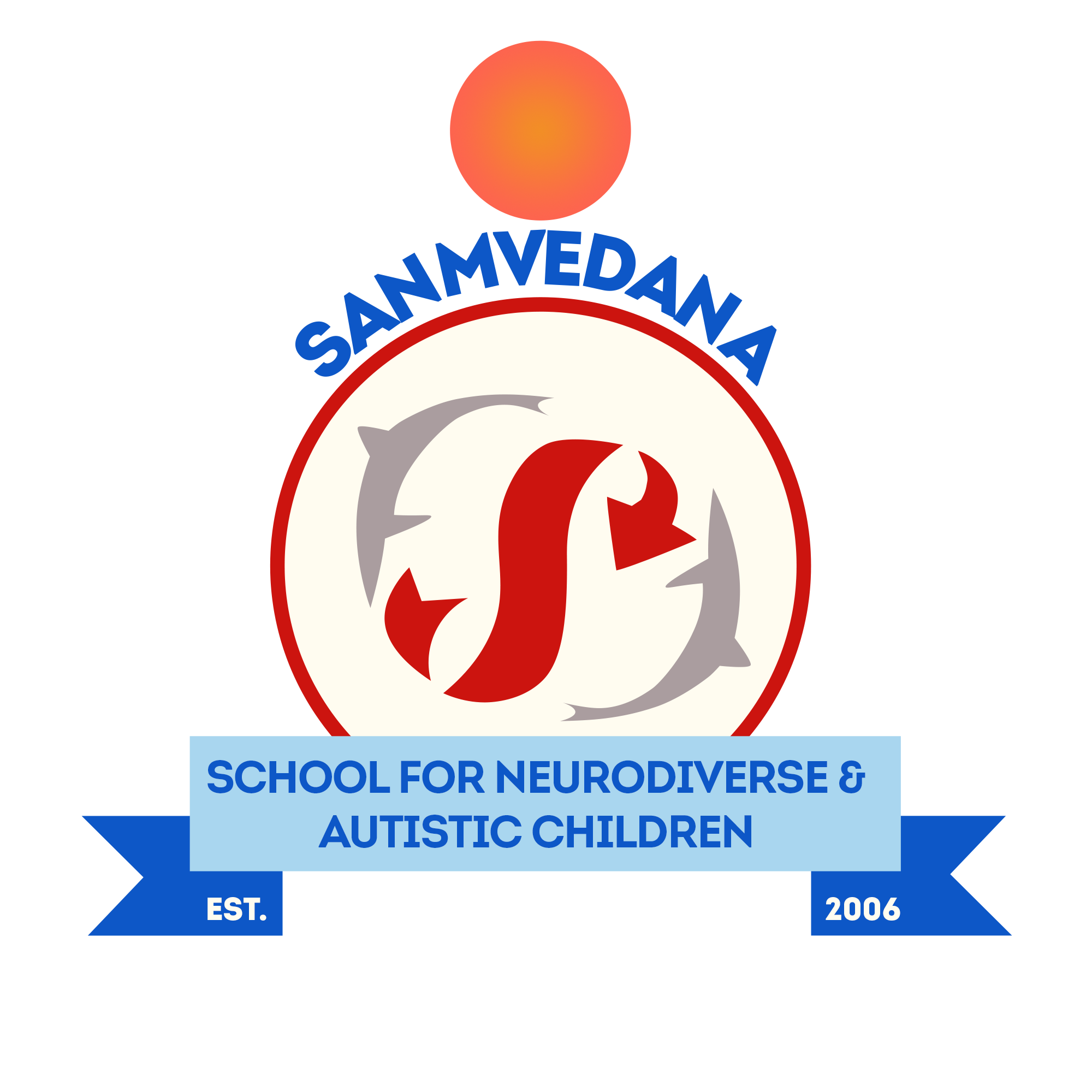Sanmvedana is a professional specialized organization, which is committed to providing an individualized education plan for each child. Thus, each IEP (Individual Education Plan) includes various areas of development including language, communication, motor development and inter-personal social skills. The common point in all programs is an emphasis on the child’s strengths, the child’s interest and making education as functional and age-appropriate as possible.
Each group has a classroom setting where personalized attention is offered according to their various needs. Grouping of these children is a skilled job in which each child is simultaneously programmed for and taught in a one-to-one situation and in a group. This optimum training module requires a maximum of five children to one teacher.
A comprehensive curriculum has been developed for each branch. The following areas are covered broadly –
Pre-academic stimulation:
Activities in this curricular area include play, music and crafts. It encourages the child to participate in things that bring out his hidden feelings and talent. It also creates a suitable and informal atmosphere for learning.
Functional Academics :
This curricular area has functional reading, writing, practical math, money and time concept, as activities.
Activities Of Daily Living :
Activities in this curricular area include eating, dressing and maintaining hygiene. The child learns the basic etiquette and mannerism to interact with the society with more confidence.
Physical Development:
Stimulation for physical growth and development is provided through yoga and sports. Sports include indoor and out door games. Students get training in skating, badminton, cricket,
Mobility skills development :
It involves field trips, films, supportive classroom activities etc. which encourage the child to actually interact with the society and participate in events which have scope for such interaction.
Computer Application:
Computers can assist learning in every area of special needs child, not just in the “3Rs” and at every level of ability. They can provide an environment in which the following may emerge.
Computers offer opportunities for playfulness, creativity and exploration in a safe environment and can produce perfect, socially valued objects. All of this can be achieved with non-specialized software, even by those who do not speak and do not appear to recognize writing. Pictures and icons are standard in computer-person interactions-and they always look the same and do the same thing when activated! Person-to-person interaction is much helped by this: everyone can see what is other person doing; turns are clearly defined; complicated skills are not required.
Computer use in an essential element of social inclusion: some individuals on the autistic spectrum may be exceptionally competent with information technology and some grow up to earn a good living in this area. Non Specialized as well as specialized software which promotes spoken communication, enhances auditory processing or addresses other specific needs. For those with poor motor control specialized hardware are made available, for example touch screen, joysticks, trackballs and switches instead of mouse or keyboard. For those who find the standard keyboard too complex a keyboard with large keys are used.
Vocational Skills :
Vocational Training prepares the students to settle into the society as efficient and able citizens. They are given training such as cooking, laminating, block printing, fabric painting etc.
Additionally, students help the staff with tasks such as maintenance, office work and meal preparation. The principal goal of this is to develop a sense of responsibility, deference to authority, understanding instructions, and a basic work ethic. Underlying all skill development is the goal of developing a sense of self worth and dignity as a member of the community.
Therapeutic Interventions:
Seventy five percent of the students at Sanmvedana require speech and occupational and /or physiotherapy. Each child’s speech, language and motor problems are scientifically evaluated. Special care is taken to ensure that teachers and parents are fully involved in the ongoing program.
Occupational therapy is administered by a occupational therapist and an assistant through manual and equipment aided techniques.
Speech Therapy :
Language delay and deviant language development are often the features which lead to diagnosis and assessment of mental multiple disability and autism. Therapists use a developmental approach to evaluate children’s overall levels and patterns of functioning. The aim of intervention is to understand the nature and extent of children’s difficulties and to facilitate better communication wherever possible. Ways of stimulating language and communication are therefore needed. The School offers a unique speech and language therapy Specifically charted speech exercises are conducted by full time speech therapists and special educators.
Where the use of spoken language provokes difficulties instead of understanding then language needs to be supported with visible forms of communication e.g. objects, pictures or symbols. In this context augmentative communication practices and programs, which support the act of communication are used. Other approaches used are PECS, Communication Boards.
